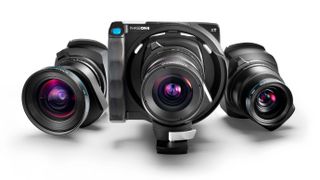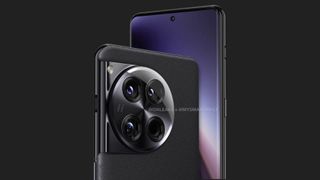Here they are – the highest-resolution cameras you can buy right now. When nothing but megapixels will do, when you're scouring the shelves for the most detail you can get for your money, these are the cameras you want. These cameras aren't cheap; in some cases, they are extravagantly not cheap. But for those who want the best of the best in terms of megapixels, here they are.
Why might someone want so many megapixels? The main advantages of big resolutions are twofold: they allow you to print images in large format, and they allow you to heavily crop into an image with little or no loss of detail. For landscape, fine art, and commercial photography, this is particularly valuable.
It is worth noting that we've kept this list to commercially available cameras. If you wanted to, you could find an industrial camera, a prototype or a made-to-order camera with a higher megapixel count, but most people would never want or need to interact with these types of cameras. All the cameras we've included here can be bought from your regular trusted photographic retailers, or directly from the manufacturers. As we've said though, they can still get very pricey. Consider yourself thoroughly warned.
But you've heard enough – you want to hear what the highest-resolution cameras are right now. Well, our list starts with specialist cameras like the Hasselblad H6D-400C Multi-Shot, which can produce 400MP images. It's a bit of a cheat (and caused a heated argument in the office) as it "only" has a 100MP sensor; it produces its 400MP images by compositing six images shot in quick succession, a process so demanding that the camera needs to be tethered to a computer.
After that, we see the Phase One XF IQ4 150MP Camera System, which technically has the highest-resolution sensor on our list. Further down, you'll start to see full-frame consumer models like the Sony A7R Mark IV, Sigma fp L, and Leica M11, which are the highest resolution cameras with full-frame sensors – which are some of the best professional cameras you can get right now. There are also plenty of medium-format cameras on the list and even some older DSLRs.
One other thing to note is that we've also not picked every single model and variation from the big makers. We could have populated this entire list with Phase One and Hasselblad, but it makes more sense to give you a broader overview of the different types of high-resolution cameras available from different manufacturers.
There are a lot of choices out there for pixel hunters! So, here goes…
Highest resolution cameras you can buy: our top picks

Best overall for resolution
he H6D-400c uses a pixel-shift capture system to achieve 400MP output from its 100MP sensor. Lots of other cameras have pixel-shift systems like this.
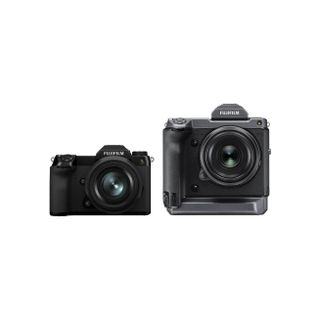
Best "affordable" options
The Fujifilm GFX 100 narrowly beats the Hasselblad H6D-100c (below) at one-third the price – and the cheaper, smaller Fujifilm GFX 100S costs even less. This is how far affordable medium format cameras have come!
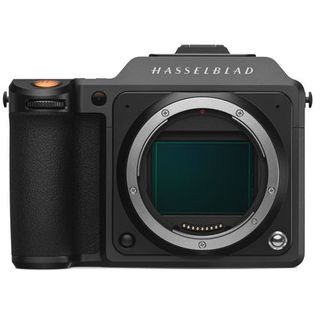
Best for colors
If you're looking for ultimate photographic quality, look no further – the Hasselblad X2D is the definitive still imaging machine.
The Highest resolution cameras right now
Why you can trust Digital Camera World Our expert reviewers spend hours testing and comparing products and services so you can choose the best for you. Find out how we test.
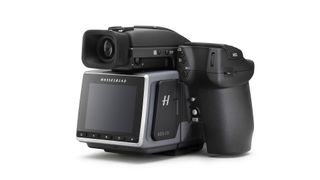
The argument is based on the capture system. The H6D-400c uses a pixel-shift capture system to achieve 400MP output from its 100MP sensor. Lots of other cameras have pixel-shift systems like this. The ONLY reason the H6D-400c is included is that it's built for 400MP capture and it's not just an incidental operating mode – it is in the camera model name.
Multi-shot captures use six different exposures and require a tethered connection to a computer. This makes them suitable only for static subjects and important archiving work for example. So while the H6D-400c might have the biggest megapixel count in this list, it does not have the highest native resolution. If that's what you came here for, you need to straight to number four.
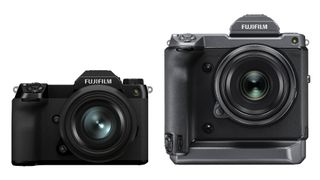
The Fujifilm GFX 100 narrowly beats the Hasselblad H6D-100c (below) at one-third the price – and the cheaper, smaller Fujifilm GFX 100S costs even less. This is how far affordable medium format cameras have come! Similar to the Hasselblad, these two cameras come with mesmerizing pixel shift technology producing astounding 400-megapixel images!
Whilst on paper they sound the same, sensor size gets you bragging rights in medium format just like anywhere else – and the Hasselblad and PhaseOne have ‘full size’ medium format sensors, while the GFX 100 has a smaller sensor mid-way between this and regular 35mm full frame.
But look – the GFX100 is a 100-megapixel camera at less than a third of the price of the others. That in itself is amazing, as is the fact that this is a camera you can use handheld, with lenses you can afford!
Read our full Fujifilm GFX 100 review or Fujifilm GFX 100S review for more details
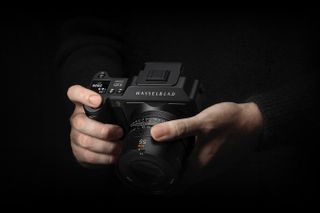
If you're looking for ultimate photographic quality, look no further – the Hasselblad X2D is the definitive still imaging machine. Thanks to the stunning 100MP image sensor and Hasselblad's exceptional Natural Colour Solution technology, simply put we have never seen images as stunning come straight out of any other camera – photos are gallery ready, directly out of the X2D.
Employing hybrid phase detect autofocus, Hasselblad's latest mirrorless marvel has the fast and robust AF system it deserves – and it also boasts a stunning seven stops of in-body image stabilization, which is unprecedented for a medium format camera, making this a truly hand-holdable device that can shoot whatever, wherever.
In addition to a 5.76 million dot viewfinder, which enables you to see every ounce of detail in your 100MP shots, the camera supports CFexpress B cards but also boasts 1TB of internal storage. No more scrambling around for cards!
The asterisk is that the X2D does not shoot video in any way, shape, or form. Honestly, though, nobody buys a medium format camera to vlog with, so this should be the farthest thing from your mind. Take one look at the image files it produces and you will be in love.
Read more: Hasselblad X2D 100C review for more details
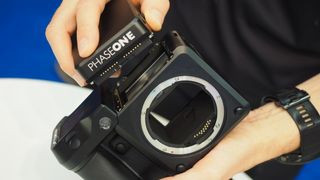
Crazy money? For an amateur, maybe, but for a high-end commercial or fashion photographer, it's a business decision like any other, like leasing premises or buying commercial vehicles.
The Phase One XF IQ4 needs careful handling and considerable investment. It’s not a walkaround camera you can stuff into a backpack. But this, and high-end medium format cameras like it, can achieve a level of quality, precision, and control you wouldn’t believe.
The XF 1Q4 system is so exclusive that you can't just go on Amazon and buy one – you have to go through Phase One's specialist dealer network.
Read our full Phase One XF IQ4 150MP review for more details
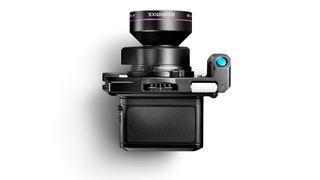
The Phase One XT is an extraordinary camera. Phase One doesn't want to call it a 'technical' camera, or a 'field' camera, but that's the closest description.
It's an extremely compact modular system that takes the same IQ4 digital backs as the Phase One XF system, above, but is designed for portability and travel. It has its own built-in lens movements for perspective correction and relies on the LCD display on its digital back for composing images.
It also uses its own lens mount and lenses, so the purchase cost of the XT itself is just the start.
Read our full Phase One XT review for more details
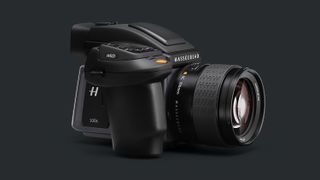
Canon and Nikon have been duking it out for years in the DSLR market, but in the world of medium format it’s Phase One vs Hasselblad. The H6D-100c is the latest in Hasselblad’s long-running modular medium format system, and while Hasselblad can’t match the Phase One for megapixels without resorting to multi-shot models like the H6D-400c (pictured), it does have the cachet and customer loyalty of the Hasselblad brand, and the company has been extremely good at combining its new tech with its much-loved legacy products. Should it really be in third place behind the GFX 100? Only for megapixels – it’s very a different kind of camera.

Sony wants users to see the Sony A7R Mark IV as a medium format rival – and if you judge it on megapixels alone, it’s right in there. It beats base-level 50MP medium format models by some margin and is nipping at the heels of some very big and expensive cameras indeed.
However, although Sony’s excellent G Master lenses are fast enough to match the shallow depth of field of bigger but slower medium format lenses, there’s still a magical X-factor that comes from bigger sensors. The recently-announced successor to this camera, the Sony A7R Mark V will use the same 61-megapixel sensor.
Read our full Sony A7R IV review for more details
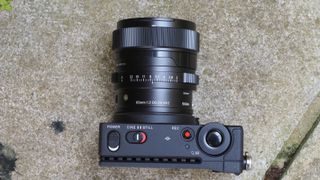
Packing the same number of megapixels as the Sony A7R IV in a body that's smaller, lighter, cheaper, and expandable, the Sigma fp L is a remarkable piece of technology.
That said, its size and modularity mean that it's not as elegant a solution straight out of the box – it lacks an electronic viewfinder, the touchscreen is fixed and there is no grip, so the camera can be hard to wield without cages or other accessories. Still, you won't find a 61MP camera anywhere else that can literally slip into the pocket of your jeans!
Read our full Sigma fp L review for more details
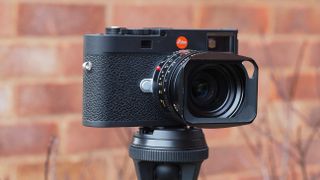
A gorgeous, glorious throwback to a bygone era, the Leica M11 is almost single-handedly keeping rangefinders alive, and we love it for that. The generous 60.3MP sensor lets you make the most of the supremely accurate rangefinder focusing system. It's tough to learn, requiring you to move the focus ring or lever on your Leica M lens to make a 'ghost' image line up with the subject. When it does, you're in focus!
We said the Leica M11's sensor is a 60.3MP type, but it's something new – a 'triple resolution' sensor that can be set to 18MP or 36MP as well as the headline resolution. The fact that 36MP is a 'medium' resolution goes to show how far we've come, doesn't it?
The Leica M11 is expensive. The M-mount lenses you'll have to buy for it are expensive. But if you've got the budget to spend on this camera, then it's one of the best high-resolution shooting experiences you can buy right now.
Read our full Leica M11 review for more details

Never forget Pentax! The 645Z has been around for so long it’s easy to overlook the fact this is the camera that made medium format affordably and is still amongst the best Pentax cameras.
These days, its DSLR construction, size, 3fpx maximum burst speed, and full HD video make it feel dated and increasingly irrelevant – but its resolution still puts it in the top half of our all-time highest-resolution list, and if you like an old-school approach, its design could appeal to you a lot more than its recent mirrorless rivals.
Read our full Pentax 645Z review for more details

Fujifilm may be grabbing headlines with its 100MP medium format GFX cameras, but it hasn't forgotten the 50MP models, as demonstrated by this refreshed release. The Fujifilm GFX 50S II is a continuation of Fujifilm's mission to make medium format (relatively affordable), so while the price is never really going to drop beneath four figures, it is still quite a bit cheaper than most medium format cameras, and than a lot of the cameras on this list.
Several things remain unchanged since the first GFX 50S camera – the maximum continuous shooting speed is still 3fps, and the maximum video resolution is Full HD. Fujifilm has made the almost certainly correct assumption that no one is buying this camera for its shooting speed or its video; they're buying it for the sheer quality of its 51.4MP stills. In that regard, it's a triumph, with levels of detail and tonality in its images that are simply astonishing.
Ergonomically, the GFX 50S II borrows its build and handling from the GFX 100S, meaning it's heavy, but well designed, with an ergonomic control layout that seems a lot better thought through than that of many medium format cameras. Also, practically everything is customizable, so you can get the camera set up exactly the way you want it.
Read our full Fujifilm GFX 50S II review for more details
How we test cameras
We test cameras both in real-world shooting scenarios and in carefully controlled lab conditions. Our lab tests measure resolution, dynamic range, and signal-to-noise ratio. Resolution is measured using ISO resolution charts, dynamic range is measured using DxO Analyzer test equipment and DxO Analyzer is also used for noise analysis across the camera's ISO range. We use both real-world testing and lab results to inform our comments in buying guides.
Read more about how we test and review products on Digital Camera World
Read more:
Best cameras for professionals
Best medium format cameras right now
The best cinema cameras
Which is the best mirrorless camera to choose
